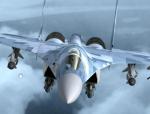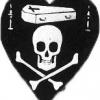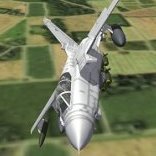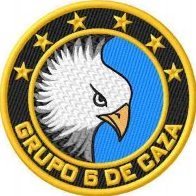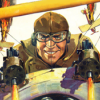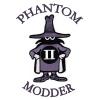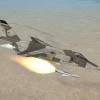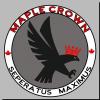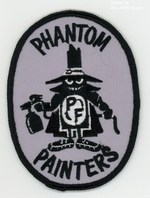Leaderboard
Popular Content
Showing most liked content on 03/24/2018 in Posts
-
7 points
-
6 points
-
4 pointsVought F-8E Crusader - 727 Eskadrille, Royal Danish Air Force, 1967 During 1955 the Royal Danish Air Force (RDAF) were looking to replace their F-84 Thunderjets from about 1958 and by early 1956 had settled on the North American F-100D Super Sabre. However, the RDAF became increasingly alarmed at the high attrition rate of the F-100 in USAF service and with the Hawker Hunter now reaching maturity they decided to buy more Hunters to replace the elderly F-84 Thunderjets and look for a more modern fighter with a slightly later service date of 1962. Competing against the BAC Lightning, Dassault Mirage III and the Lockheed Starfighter, Vought initially offered a version of the Crusader F8U-2N (F-8D) but by mid-1959 were able to offer a planned multi-role development of the Crusader with a more powerful Magnavox APQ-94 radar and air-to-ground capability. Initially known as the F-8U2NE this later became known as the F-8E and the Danish government became the first Crusader export customer when it signed up for 50 F-8E's in late 1959 for delivery in early 1962. The Crusader entered service with 727 Eskadrille and 730 Eskadrille based at Skrystrup and later followed by 725 Eskadrille based at Karup. From about 1964 the RDAF adopted an overall 'NATO Green' finish and the types popularity saw the Danish government place further orders for 48 of a more advanced version of the F-8E with further improvements in avionics including the Magnavox APQ-124 radar and the uprated J-57 P-20D engine plus 16 multi-sensor recconnaisance aircraft. Designated F-8E(D) and RF-8E(D) these advanced Crusaders were the last new-build Crusaders ever made and killed off any hopes of Sweden selling the SAAB Draken to Denmark. In the mid-1970's the remaining 41 F-8E's were refurbished by SABCA of Belgium and brought up to a standard almost equivalent to the F-8E(D) and the type served until the late-1980's when replaced by F-16C's.
-
4 pointsA few more shots of variations now available with the latest fire/smoke tweaks, and for balloon explosions...will package all of this with a ver. 9.5 FM update pack eventually. Happy flying, Von S
-
3 points- Finished all river tiles - Lagoon - River/Sea transition - Mediterranean vegetation - Beaches - Railway lines ..takes ages to load LOL
-
3 points
-
2 points
-
2 points
-
2 pointsMore superb work - I look forward to your map update. I will try and get some of the maritime objects you requested finished in the next few weeks.
-
2 pointsPersonally, hope support for LOD based terrain ends up on the bottom - such an unoptimized, clunky terrain rendering approach with such little potential. TOD support would be really interesting, and would love to see progress made on that feature. But above all this: would much, much rather see enhancements to the existing tool such as support for copy/paste, display of world/map coordinates, etc. ability to group and move objects as a group, etc.
-
2 points
-
2 points
-
1 pointThanks. Recognition and thanks is owed to Mike Dora for his assistance with researching a technical question concerning spent brass disposal on German aircraft. Some famous German aircraft, such as Fokkers, just dumped the expended cartridges into the slip stream. This often resulted in hot brass showering the pilot so it was a less-than-ideal solution. Other aircraft manufacturers took a different approach, which caused endless confusion. So Mike, who is an associate of the Old Rhinebeck Aerodrome in up state New York, drove to the airfield and photographed their replicas. Unfortunately, the replicas ignored that detail - but Mike gets an A for effort! Some snippets from our development thread: ...Also, a word of explanation for my earlier skepticism. I am one of the fast disappearing group of guys who have real-world experience with aircraft machine guns. First shot shows the old B-52 gun turret I worked on during 'Nam. Note the rectangular slots of the ammo chutes that disposed of the empty cartridges - typical of most 1940s-1950s aircraft. Second shot shows guys maintaining the four .50 Brownings clustered in the rear turret - I was one of those guys. We had endless problems with ammo feed and empties disposal because cartridges almost never behave in a predictable manner - they twist and tumble and cluster in unpredictable ways that drive engineers crazy. The higher the rate of fire, the worse it gets. Now you know why the first thing I looked for was rectangular ammo chutes in the belly. When I did not see any, I naturally concluded that some German aircraft did not dispose of their empty cartridges. It never occurred to me to look for what appear to be drainage tubes, located next to aft-most circular door.
-
1 point
-
1 pointView File Hawker Hunter FGA.9 - RAF Far East Air Force Hawker Hunter FGA.9 - RAF Far East Air Force This is a simple mod of the stock Third Wire Hunter FGA.9 to place it in service with the RAF's Far East Air Force in the 1961-1970 timeline. That really did happen but not with the Hunter wearing 'SEAC' national markings! New decals are included including 26 new tail serials and 26 new underwing serials. BACKSTORY The growing threat to Thailand, Cambodia and South Vietnam from nearby Communist states saw the deployment of the Hawker Hunter FGA.9's of No. 20 Squadron to the Far East Air Force in September 1961 followed by No.28 Squadron in July 1962. The Borneo Confrontation of 1963 saw this ground-attack wing deployed to Kuching and Labuan to commence offensive operations against Indonesian forces seeking to infiltrate across the Malaysia/Indonesia border on the island of Borneo. The Commander of the Far East Air Force, Air Marshal Sir Hector McGregor, ordered the re-introduction of the wartime 'SEAC' markings to avoid any potential confusion with the Indonesian Air Force's red and white national markings. Both squadrons were successful in helping to repel the border incursions by the Indonesians, despite the difficult terrain, and stayed in theatre until the Borneo Confrontation was declared over in August 1966 eventually departing in January 1967 when No.28 Squadron was disbanded and No.20 Squadron returned to Tengah. INSTRUCTIONS 1. From the AIRCRAFT folder drag and drop the HunterFGA9S folder into your Aircraft folder. 2. From the DECALS folder drag and drop the HunterFGA9S folder into your Decals folder. It goes without saying that you'll need the Third Wire Hunter FGA.9 from 'Wings Over Europe' for this to work but if you have 'Wings Over Israel' you can use a substitute 'stock' cockpit as the aircraft LOD's are in that game. The folder designation FGA.9S is just to avoid conflict with the stock FGA.9 aircraft in 'Wings Over Europe'. CREDITS Thanks to TK for a great little game/sim. And thanks to everyone in the wider Third Wire community. Regards Spinners Version 1 - 18/03/18 Submitter Spinners Submitted 03/18/2018 Category Fictional Aircraft, Experimental and UAV's
-
1 pointUs army unfortunatly could not catch up : https://www.duffelblog.com/2018/02/entire-military-disappointed-no-one-thought-run-dick-shaped-route-syria/
-
1 point
-
1 point
-
1 point
-
1 point
-
1 point
-
1 pointGot a whale of a tale to tell ya, lads A whale of a tale or two 'Bout the flapping fish and girls I've loved On nights like this with the moon above A whale of a tale and it's all true, I swear by my tatoo
-
1 point
Important Information
By using this site, you agree to our Terms of Use, Privacy Policy, and We have placed cookies on your device to help make this website better. You can adjust your cookie settings, otherwise we'll assume you're okay to continue..



